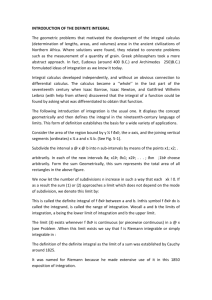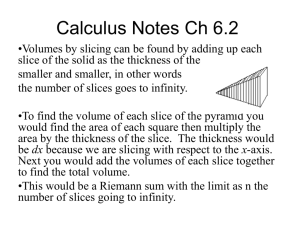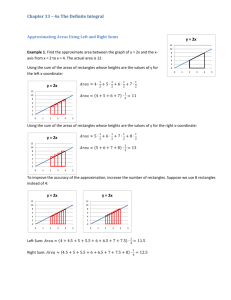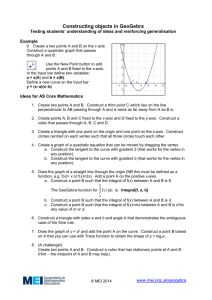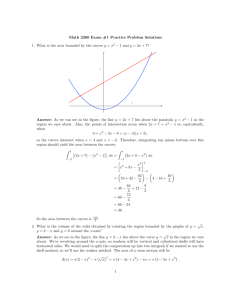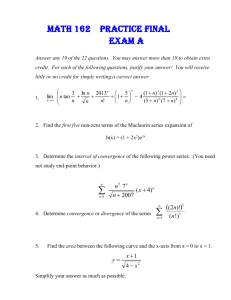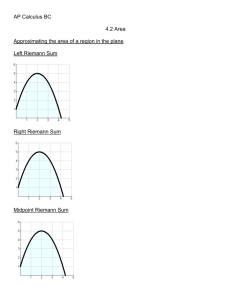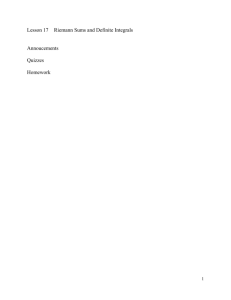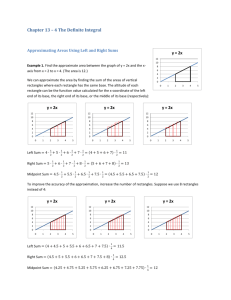Geometry - Lakeside School
advertisement
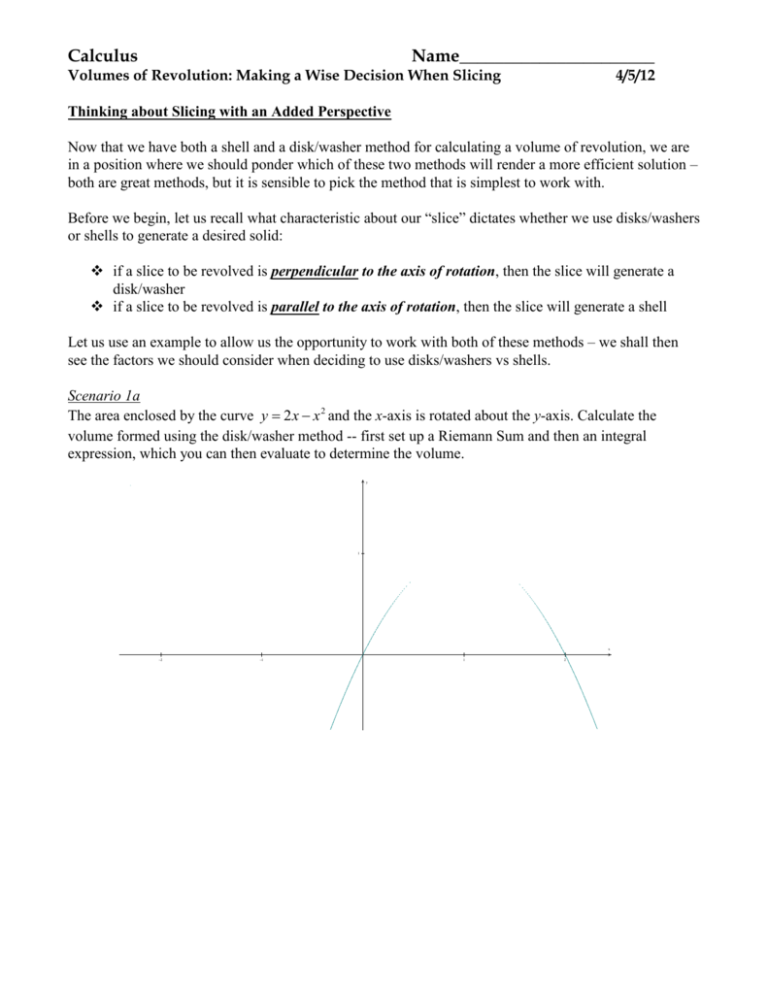
Calculus Name______________________ Volumes of Revolution: Making a Wise Decision When Slicing 4/5/12 Thinking about Slicing with an Added Perspective Now that we have both a shell and a disk/washer method for calculating a volume of revolution, we are in a position where we should ponder which of these two methods will render a more efficient solution – both are great methods, but it is sensible to pick the method that is simplest to work with. Before we begin, let us recall what characteristic about our “slice” dictates whether we use disks/washers or shells to generate a desired solid: if a slice to be revolved is perpendicular to the axis of rotation, then the slice will generate a disk/washer if a slice to be revolved is parallel to the axis of rotation, then the slice will generate a shell Let us use an example to allow us the opportunity to work with both of these methods – we shall then see the factors we should consider when deciding to use disks/washers vs shells. Scenario 1a The area enclosed by the curve y 2 x x 2 and the x-axis is rotated about the y-axis. Calculate the volume formed using the disk/washer method -- first set up a Riemann Sum and then an integral expression, which you can then evaluate to determine the volume. y x Calculus Let us now look at the same scenario, but this time, let’s use the shell method to determine the volume of revolution: Scenario 1b The area enclosed by the curve y 2 x x 2 and the x-axis is rotated about the y-axis. Calculate the volume formed using the shell method -- first set up a Riemann Sum and then an integral expression, which you can then evaluate to determine the volume. y x Calculus Hopefully you are now aware of one reason one might consider setting up a definite integral using horizontally (dy) vs vertically (dx)-oriented slices. Let’s look at another scenario, different in nature: Scenario 2a Suppose we consider the region enclosed by y x , y 2 x 2 , and the x-axis. If we revolve this area around the x-axis using vertical “slices”, determine its volume – again, first set up a Riemann Sum and then an integral expression, which you can then evaluate to determine the volume. Note: you will first want to determine whether you will be working with disks/washers vs shells. y x Calculus Scenario 2b Suppose we consider the region enclosed by y x , y 2 x 2 , and the x-axis. If we revolve this area around the x-axis using horizontal “slices”, determine its volume – again, first set up a Riemann Sum and then an integral expression, which you can then evaluate to determine the volume. Note: you will first want to determine whether you will be working with disks/washers vs shells. y x Take-Away Question: Based on these two exercises, what factors should one consider when constructing an expression to determine a volume of revolution?
